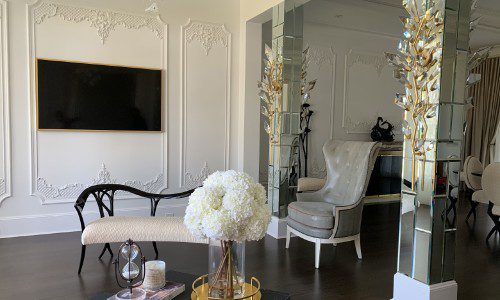Earlier this year, Great Neck, N.Y.-based integrator ATTYWON chatted with CE Pro about how it leverages its relationship with Stealth Acoustics to earn more business with designers and homeowners. ATTYWON – an acronym for “All the Technology You Want or Need” – has the task of catering to affluent customers from Manhattan to eastern Long Island.
Eyal Akler, principal of CE Pro 100 integrator, shared more of his insights about why Stealth’s invisible speakers – now in the Mount Vernon, Wash.-based manufacturer’s 8th generation of products – are so vital to their sales strategy.
CE Pro: What are the challenges of installing invisible loudspeakers in New York City high-rises?
Akler: Actually, these speakers are relatively low profile. Getting them into ceilings is oftentimes easier than traditional in-ceiling speakers that might have a 3½- or 4-inch depth. These don’t have the same kind of depth.
Some buildings require you to have a metal backbox, a certain kind of fire rating and more. So if an apartment is being built or renovated, there’s usually some kind of a drop to the ceiling that has plenty of space for us to install a backbox, certainly a speaker, and we don’t have any problems.
In fact, often in the city the walls could be masonry and installing in the ceiling might even be easier than going into a wall. Sometimes we have to get [builders] to chisel it in… so our preference is to go into the ceiling.
CE Pro: ATTYWON often pairs Stealth speakers with Samsung Frame TVs. In large residences on Long Island, how do you capitalize on that combo?
Akler: It usually goes into about two to three rooms, very often in places like an eat-in kitchen, where they don’t want to see a black TV on the wall when it’s off. In a living room or family room, especially when it’s designed a little bit fancier, again you don’t want to see a black screen when a TV is off.
We often sell a dozen or more Frame TVs in a very large house, and we’ve had houses that have had north of 30 TVs installed, and a pretty decent percentage of them are Frame TVs.
So for invisible speakers, it’s usually two to four per room, depending on what it’s being used for. If it’s a larger living room or great room, there could be four, sometimes even six speakers. Bedrooms we typically do two, and since we’re hiding them, we don’t have to worry about symmetry in the ceiling.
We’ll pull them closer to the bed, so when a person is sitting there listening to music or even watching TV, the sound actually is a little bit closer to you so you can play everything at a lower volume, and it’s more intelligible. You’re not disturbing people in the in the bedroom next to you – it’s a room that makes perfect sense for Stealth Acoustics‘ invisible speakers.
You can install them right behind the bed if you don’t have a very tall or imposing headboard; we’ll put speakers in the wall very low, down close to your ear.
CE Pro: Invisible speakers require more labor than traditional architectural models – has ATTYWON profited from the extra work involved?
Akler: Certainly. The speakers cost a little more than your traditional in-ceiling and in-wall speakers, and so clients who want them understand that the labor is going to cost a little more. Also, if you spend twice as long installing these speakers, you just charge for twice the time. I really haven’t had any kind of experience of pushback or any kind of issues with labor.
Sometimes the way certain ceilings or walls are framed, it’s more difficult. We’ll have to install some bracing or make some adaptable pre-installation boxes, where if you have 14½ inches between the studs it’s not a problem but if some are closer together or further apart, you can adapt it and put a pre-fab box into the wall.
Otherwise, we’ll just have the framers or the GC reframe a certain section of wall or ceiling for us to make it easier, and we have our own techs put the speakers in.
We explain to the Sheetrock and tape guy what needs to be done, and we show them the documents that recommend a certain amount of spackle and stuff like that. There’s reciprocity [for bringing each other projects] for sure.
Learn more about invisible speakers at stealthacoustics.com.







